Inhibition of UVB radiation-induced tissue swelling and immune suppression by nicotinamide riboside and pterostilbene
- PMID: 38676310
- PMCID: PMC11077400
- DOI: 10.1111/phpp.12961
Inhibition of UVB radiation-induced tissue swelling and immune suppression by nicotinamide riboside and pterostilbene
Abstract
Background: Environmental ultraviolet radiation has deleterious effects on humans, including sunburn and immune perturbations. These immune changes are involved in skin carcinogenesis.
Objectives: To determine whether nicotinamide riboside and/or pterostilbene administered systemically inhibits inflammatory and immune effects of exposure to mid-range ultraviolet radiation.
Methods: To examine UVB radiation-induced inflammatory effects, mice were fed standard chow/water, 0.04% pterostilbene in chow and 0.2% nicotinamide riboside in drinking water, diet with nicotinamide riboside alone, or diet with pterostilbene alone. After 4 weeks, mice were exposed to UVB radiation (3500 J/m2), and 24-/48-h ear swelling was assessed. We also asked if each agent or the combination inhibits UVB radiation suppression of contact hypersensitivity in two models. Mice were fed standard diet/water or chow containing 0.08% pterostilbene, water with 0.4% nicotinamide riboside, or both for 4 weeks. Low-dose: Half the mice in each group were exposed on the depilated dorsum to UVB radiation (1700 J/m2) daily for 4 days, whereas half were mock-irradiated. Mice were immunized on the exposed dorsum to dinitrofluorobenzene 4 h after the last irradiation, challenged 7 days later on the ears with dinitrofluorobenzene, and 24-h ear swelling assessed. High dose: Mice were treated similarly except that a single dose of 10,000 J/m2 of radiation was administered and immunization was performed on the unirradiated shaved abdomen 3 days later.
Results: Nicotinamide riboside and pterostilbene together inhibited UVB-induced skin swelling more than either alone. Pterostilbene alone and both given together could inhibit UVB-induced immune suppression in both the low-dose and high-dose models while nicotinamide riboside alone was more effective in the low-dose model than the high-dose model.
Conclusion: Nicotinamide riboside and pterostilbene have protective effects against UVB radiation-induced tissue swelling and immune suppression.
Keywords: animal model; immunity; inflammation; ultraviolet radiation.
© 2024 John Wiley & Sons A/S. Published by John Wiley & Sons Ltd.
Conflict of interest statement
CONFLICT OF INTEREST
R. D. G. has a research agreement with Pfizer, Inc. for a clinical study of calcitonin gene-related peptide. He is on the scientific advisory board of Elysium Health, Inc. and holds equity and stock options; has research agreements with Leo Pharma, Inc., the Abby and Howard Milstein Foundation, the Leo Foundation and Elysium Health, Inc. He is an advisor to Gore Range Capital and may receive fees for this. He is also an advisor to BelleTorus Corporation and holds stock options.R. W. D. is an employee of Elysium Health, Inc.
Figures
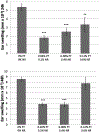
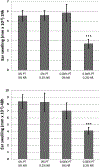
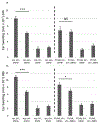
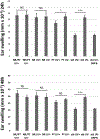
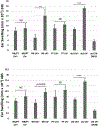
Similar articles
-
Polypodium leucotomos inhibits ultraviolet B radiation-induced immunosuppression.Photodermatol Photoimmunol Photomed. 2008 Jun;24(3):134-41. doi: 10.1111/j.1600-0781.2008.00352.x. Photodermatol Photoimmunol Photomed. 2008. PMID: 18477132
-
Divergence of contact hypersensitivity in vivo compared with hapten-specific lymphocyte proliferation and interferon-gamma production in vitro following ultraviolet B irradiation: the possibility that UVB does not affect the sensitizing phase of contact hypersensitivity.Immunology. 2003 Apr;108(4):570-8. doi: 10.1046/j.1365-2567.2003.01602.x. Immunology. 2003. PMID: 12667220 Free PMC article.
-
Local and systemic consequences of acute, low-dose ultraviolet B radiation are mediated by different immune regulatory mechanisms.Eur J Immunol. 1994 Aug;24(8):1765-70. doi: 10.1002/eji.1830240807. Eur J Immunol. 1994. PMID: 8056035
-
Relationship between ultraviolet radiation-induced immunosuppression and carcinogenesis.J Invest Dermatol. 1994 Nov;103(5 Suppl):107S-111S. doi: 10.1111/1523-1747.ep12399400. J Invest Dermatol. 1994. PMID: 7963670 Review.
-
Can nicotinamide riboside protect against cognitive impairment?Curr Opin Clin Nutr Metab Care. 2020 Nov;23(6):413-420. doi: 10.1097/MCO.0000000000000691. Curr Opin Clin Nutr Metab Care. 2020. PMID: 32925178 Review.
References
-
- Svobodova A, Walterova D, Vostalova J. Ultraviolet light induced alteration to the skin. Biomed Pap Med Fac Univ Palacky Olomouc Czech Repub 2006;150:25–38. - PubMed
MeSH terms
Substances
Grants and funding
LinkOut - more resources
Full Text Sources

